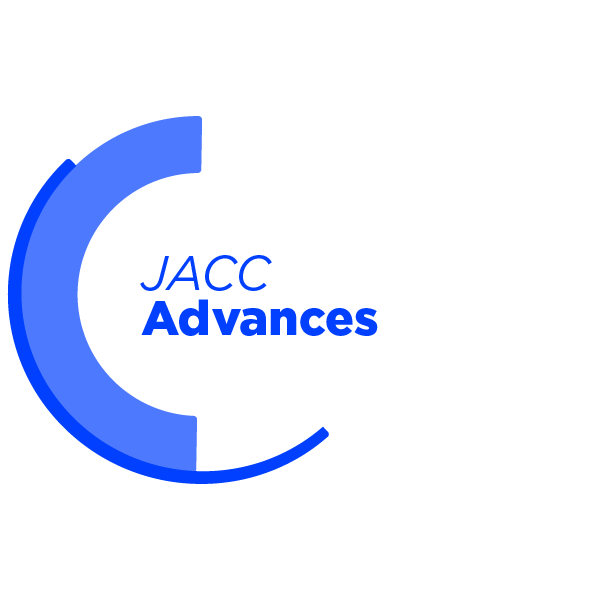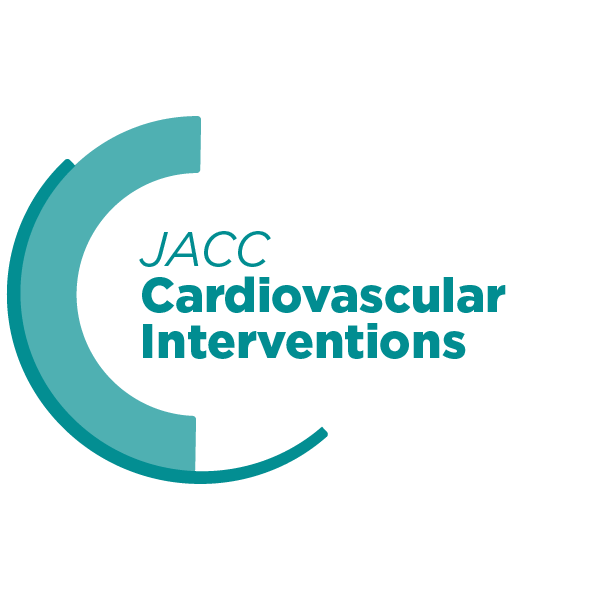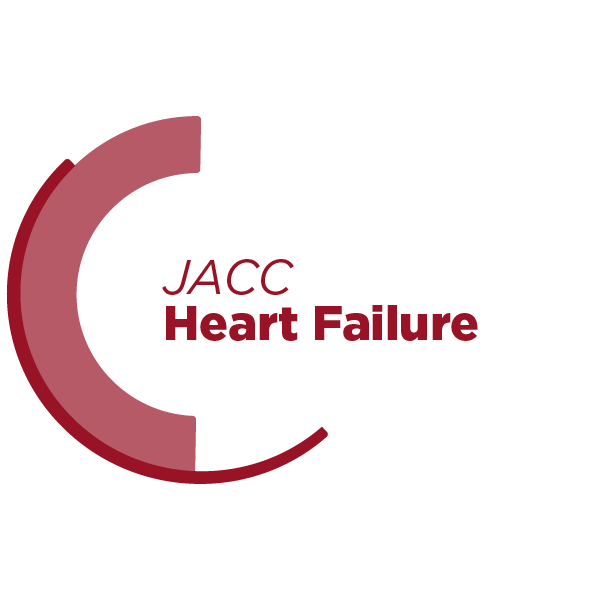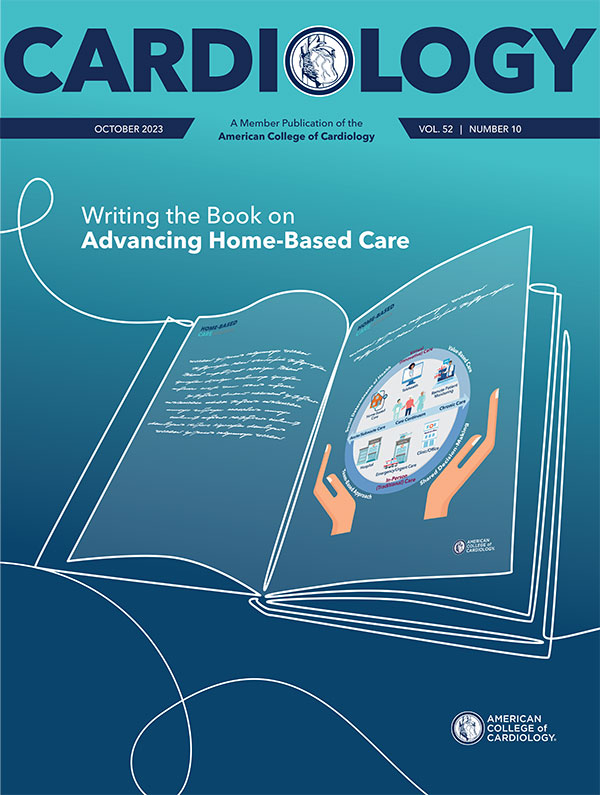JACC in a Flash
Featured topics and Editors' Picks from all of ACC's JACC Journals.
JACC Journals at ESC Congress 2023
Coinciding with research presented during ESC Congress 2023, more than a dozen manuscripts were simultaneously published across the family of JACC Journals. Check out some of the highlights here. Click here to read all the manuscripts.
Expert Analysis on TOP TRIALS FROM ESC Congress 2023
Join JACC Editor-in-Chief Valentin Fuster, MD, PhD, MACC, and expert panelists Biykem Bozkurt, MD, PhD, FACC; Davide Capodanno, MD, PhD; Gry Dahle, MD, PhD; and Jeanne E. Poole, MD, FACC, for the latest installment of ACC Cardiology Hour. Hear about the key takeaways and practice implications from some of the hottest trials from ESC Congress 2023, including STEP HFpEF, QUEST, ATTRibute-CM, OCT vs. IVUS vs. angiography guidance, ECLS-SHOCK, MULTISTARS AMI, COP-AF and ADVENT. Watch the full video at JACC.org/CardiologyHour.

According to a patient-level pooled analysis of the DAPA-HF and DELIVER trials, the efficacy and safety of dapagliflozin, a SGLT2 inhibitor, were consistent across global regions despite differences in patient characteristics, background treatment and event rates. Toru Kondo, MD, PhD, et al., found that the benefit of dapagliflozin on the primary outcome, defined as the composite of worsening heart failure (HF) or cardiovascular death, did not vary by region: Europe, 0.85 (95% CI, 0.75-0.96); North America, 0.75 (95% CI, 0.61-0.93); South America, 0.72 (95% CI, 0.58-0.89); and Asia, 0.74 (95% CI, 0.61-0.91) (p=0.40). In an accompanying editorial comment, Javed Butler, MBBS, FACC; Muhammad Shahzeb Khan, MD, MSc; and Gregg C. Fonarow, MD, FACC, add: "The key takeaway message from this study should be that SGLT2 inhibitors specifically, and the overall treatment of HF, need to be applied equally across different geographic regions, and our focus should be on implementation of these therapies globally."
Antithrombotic Therapy After LAAOA comprehensive meta-analysis of more than 40 studies conducted by Pedro E. P. Carvalho, et al., sought to determine the optimal antithrombotic therapy following left atrial appendage occlusion (LAAO) in patients with nonvalvular atrial fibrillation. Use of direct oral anticoagulants (DOACs), vitamin-K antagonists (VKAs), single antiplatelet therapy (SAPT), dual antiplatelet therapy (DAPT), DOAC plus SAPT, and VKA plus SAPT was compared with no antithrombotic therapy. Of the 12,451 patients analyzed, DOACs exhibited the highest likelihood of lower thromboembolic events and major bleeding. In addition, DAPT was associated with a lower rate of thromboembolic events compared with SAPT.

Paolo Bima, MD, et al., investigated the prevalence of acute myocardial infarction (AMI) in cancer patients presenting to the emergency department (ED) with chest pain along with the efficacy of high-sensitivity cardiac troponins and diagnostic algorithms in this patient group. Among 8,267 patients included in the study, 711 (7.6%) had cancer. Results showed that cancer patients had a higher prevalence of AMI as the cause of chest pain (26.8% with cancer vs. 21.1% without cancer; p<0.001). Researchers also found that cancer was associated with increased length of ED stay and hospitalization rates, and that the diagnostic accuracy of high-sensitivity troponin for NSTEMI as well as the efficacy of European Society of Cardiology 0/1-h-hs-cTnT and I algorithms were reduced.

In a study of the nature of nitric oxide bioactivity in red blood cells (RBCs), Tong Jiao, MD, PhD, et al., identified a pathway in which stimulation of soluble guanylyl cyclase (sGC) induces release of a cardioprotective factor – exporting cyclic guanosine monophosphate that then activates cardiac protein kinase G – which protects from myocardial ischemia-reperfusion injury. This discovery may present a novel therapeutic target for prevention of cardiac injury in patients with type 2 diabetes. Researchers acknowledge several study limitations, including that "the effect of RBCs was evaluated in an isolated rat heart model ex vivo, and therefore it cannot be determined from these data the extent to which sGC stimulation in RBCs may contribute to cardioprotection in vivo in humans."

Through an assessment of the prevalence of common CYP2C19 genotype polymorphisms in a British-South Asian population, Emma F. Magavern, MD, MSc, et al., found that of 44,396 participants in the Genes and Health cohort of British Bangladeshi and Pakistani ancestry, 13% were considered poor metabolizers, carrying two CYP2C19 loss-of-function alleles, which is much higher than found in previously studied European (2.4%) and Central/South Asian (8.2%) groups. Researchers note that 69% of the cohort who were diagnosed with an AMI were prescribed clopidogrel, and those considered poor metabolizers had a greater likelihood of recurrent myocardial infarction (MI) (OR, 3.1; p=0.019). In a related editorial comment, Rolf P. Kreutz, MD, FACC, says the study "adds to the growing evidence that CYP2C19 poor or intermediate metabolizers treated with clopidogrel are at increased risk for recurrent [MI] and supports the use of pharmacogenomic testing for clopidogrel resistance in at risk patient populations."

Presenting results from the SWAP-6 study, Francesco Franchi, MD, et al., randomized 77 patients undergoing PCI to one of three groups – prasugrel only at start of PCI, cangrelor plus prasugrel concomitantly at start of PCI, or cangrelor at start of PCI plus prasugrel at end of infusion – to determine if a drug-drug interaction exists when transitioning from intravenous P2Y12 inhibition with cangrelor to oral P2Y12 inhibition with prasugrel. Results found that "concomitant administration of prasugrel with cangrelor leads to a marked increase in platelet reactivity after stopping cangrelor infusion, supporting the presence of a [drug-drug interaction]."
MIRACLE2 Score in Predicting Poor OutcomeWhen compared with downtime and current selection criteria, Robert Aldous, BSc, MRCP, et al., found the MIRACLE2 Score had superior prediction of outcome after out-of-hospital cardiac arrest than downtime and higher discrimination of poor outcome than current randomized control trial recruitment criteria. The study included 1,259 patients from the European Cardiac Arrest Registry, and the primary outcome was poor neurological outcome on hospital discharge, defined as Cerebral Performance Category 3-5. The authors note their findings have several clinical implications in both determining appropriate selection of out-of-hospital cardiac arrest patients for invasive therapies as well as future randomized controlled trials.
Stressed Blood Volume in Patients With Severe TRA study evaluating stressed blood volume in patients with severe tricuspid regurgitation (TR) and its implications for transcatheter tricuspid edge-to-edge repair (TEER). Investigators found that estimated stressed blood volume, calculated from hemodynamic variables fit to a comprehensive cardiovascular model, was associated with obesity, renal and liver dysfunction, more severe HF, attenuated reduction of venous congestion after TEER and adverse clinical outcomes. "These findings provide new insights into the potential mechanistic links between excessive blood volume and abnormalities in venous capacitance/compliance, obesity, hepatic/renal function as well as RV-PA coupling and TR-associated right-sided HF," write Karl-Philipp Rommel, MD, et al. "The present data also suggest that therapies targeting [stressed blood volume] may be promising to reduce residual risk in TR patients undergoing TEER."

People with heart failure (HF) who increase their daily step count saw improvements in their health status over a 12-week period, according to a study published in JACC: Heart Failure. The study suggests that physical data from wearable devices, such as step count, may be clinically significant and has the potential to inform future clinical trials and clinical care.
Jessica Golbus, MD, MS, et al., used data from the CHIEF-HF trial, randomized controlled trial that provided all participants with a Fitbit and asked them to complete serial Kansas City Cardiomyopathy Questionnaires (KCCQ) through a smartphone application. Researchers evaluated the relationship between daily step count and floors climbed and KCCQ total symptom score (KCCQ-TSS) and physical limitation score (KCCQ-PLS) at two weeks as well as their changes over 12 weeks. The study cohort included 425 people with HF (44.5% women, 40.9% with HF with reduced ejection fraction).
Results showed that at two weeks the mean KCCQ-PLS was 55.7 and the KCCQ-TSS was 62.7. On average, over the 12 weeks, KCCQ-PLS increased by 4.0 points and KCCQ-TSS increased by 2.5 points. As daily step counts increased, so did both scores.
A daily step count between 1,000 and 5,000 was significantly associated with symptoms and physical limitations based on the KCCQ-TSS and KCCQ-PLS. Little association was seen once step counts reached >5,000 steps per day. The KCCQ-TSS was 3.11 points lower in participants who walked 1,000 vs. 2,000 steps a day and 2.89 points higher in those who walked 3,000 vs. 2,000 steps a day.
Changes in step count over time were significantly associated with changes in KCCQ scores, suggesting that step count data from a wearable device may be leveraged to inform clinical care, or in the future, as clinical trial endpoints. Compared with participants without a change in daily step count, an increase by 2,000 steps was associated with a 5.2-point increase in KCCQ-TSS and a 5.33-point increase in KCCQ-PLS. A decline in step count was associated with a numerical but not significant decline in KCCQ-physical limitation score.
"[Our research showed] increased step counts were significantly associated with improvements in health status, suggesting that increases in step count over time as assessed by a wearable device may be clinically meaningful," said Golbus.
Golbus JR, Gosch K, Birmingham MC, et al. JACC Heart Fail 2023; Epublished DOI: 10.1016/j.jchf.2023.05.033.

New and existing cardiorenal therapies can reduce cardiovascular risk in patients with chronic kidney disease (CKD) and diabetes, beyond results achieved from blood pressure, dyslipidemia or glycemic control alone, according to a recent JACC Review Topic of the Week.
Despite management with lifestyle interventions and traditional pharmacotherapy – focused on controlling hyperglycemia, hypertension and dyslipidemia – high residual cardiovascular risk persists. "The complex pathophysiology of CKD in diabetes, together with its CV complications, provides many potential mechanistic targets for therapy," write Javier Morales, MD, and Yehuda Handelsman, MD.
The authors discuss a range of novel medications, including RAAS inhibitors, SGLT2 inhibitors, GLP1-RAs, and nonsteroidal mineralocorticoid receptor antagonists (MRAs), as potential treatments. Although there is limited research to date, they suggest that therapies using a combination of ACE inhibitors or ARBs, SGLT2 inhibitors, nonsteroidal MRAs and possibly GLP1-RAs may further improve kidney and cardiovascular outcomes in this patient group.
They also summarize current evidence-based guidelines, which increasingly encourage combination therapy for patients with CKD and diabetes, including the 2022 AHA/ACC/HFSA Guideline for the Management of Heart Failure as well as recommendations from the Kidney Disease: Improving Global Outcomes Diabetes Work Group, the American Diabetes Association and the European Association for the Study of Diabetes.
Calling for "efforts to introduce clinicians to the contemporary data and medical-directed guideline therapy," the authors note clinicians should incorporate these strategies "in the management of patients with diabetes and CKD to improve patient quality of life and reduce morbidity and mortality."
Morales J, Handelsman Y. J Am Coll Cardiol 2023;82:161-70.
Clinical Topics: Arrhythmias and Clinical EP, Heart Failure and Cardiomyopathies, Invasive Cardiovascular Angiography and Intervention, Atrial Fibrillation/Supraventricular Arrhythmias, Acute Heart Failure
Keywords: ACC Publications, Cardiology Magazine, Atrial Fibrillation, Cardiology, Percutaneous Coronary Intervention, Diabetes Mellitus, Type 2, Ischemia, Heart Failure
< Back to Listings

